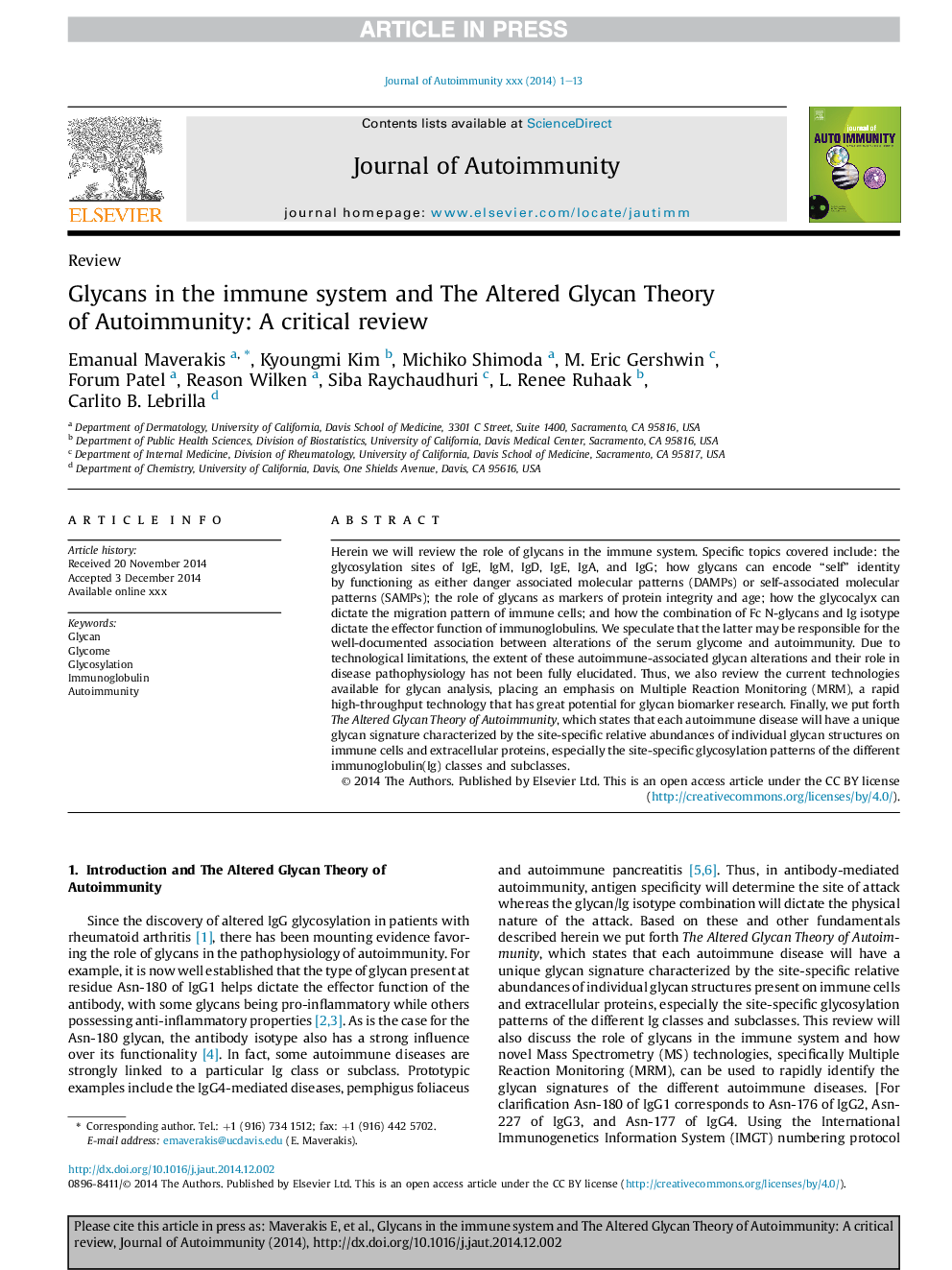| Article ID | Journal | Published Year | Pages | File Type |
|---|---|---|---|---|
| 6119211 | Journal of Autoimmunity | 2015 | 13 Pages |
Abstract
Herein we will review the role of glycans in the immune system. Specific topics covered include: the glycosylation sites of IgE, IgM, IgD, IgE, IgA, and IgG; how glycans can encode “self” identity by functioning as either danger associated molecular patterns (DAMPs) or self-associated molecular patterns (SAMPs); the role of glycans as markers of protein integrity and age; how the glycocalyx can dictate the migration pattern of immune cells; and how the combination of Fc N-glycans and Ig isotype dictate the effector function of immunoglobulins. We speculate that the latter may be responsible for the well-documented association between alterations of the serum glycome and autoimmunity. Due to technological limitations, the extent of these autoimmune-associated glycan alterations and their role in disease pathophysiology has not been fully elucidated. Thus, we also review the current technologies available for glycan analysis, placing an emphasis on Multiple Reaction Monitoring (MRM), a rapid high-throughput technology that has great potential for glycan biomarker research. Finally, we put forth The Altered Glycan Theory of Autoimmunity, which states that each autoimmune disease will have a unique glycan signature characterized by the site-specific relative abundances of individual glycan structures on immune cells and extracellular proteins, especially the site-specific glycosylation patterns of the different immunoglobulin(Ig) classes and subclasses.
Related Topics
Life Sciences
Immunology and Microbiology
Immunology
Authors
Emanual Maverakis, Kyoungmi Kim, Michiko Shimoda, M. Eric Gershwin, Forum Patel, Reason Wilken, Siba Raychaudhuri, L. Renee Ruhaak, Carlito B. Lebrilla,
